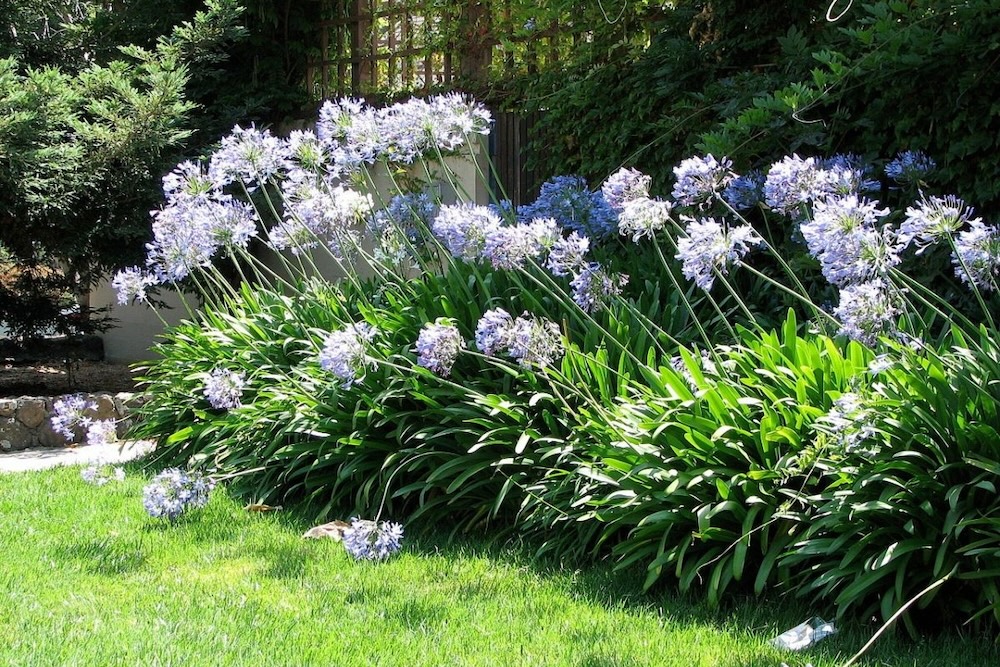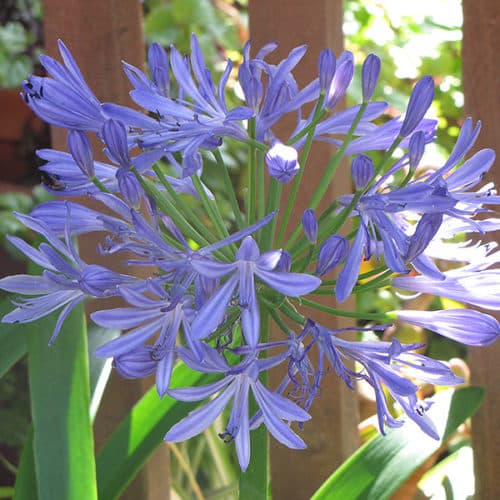Exactly how to Plant and Maintain Agapanthus in Your Garden
Exactly how to Plant and Maintain Agapanthus in Your Garden
Blog Article
Releasing the Secret to Successful Agapanthus Farming: Tips and Tricks for a Flourishing Garden
In the realm of gardening, cultivating agapanthus successfully needs a calculated technique that includes different aspects of plant treatment. With cautious interest to detail, one can open the secrets to supporting these spectacular blossoms, bring about a garden that flourishes with appeal and vibrancy. By comprehending the subtleties of agapanthus farming, one can produce a setting where these plants grow and grow generously. In the adhering to conversation, we will certainly discover important pointers and methods that will certainly direct you towards a thriving agapanthus yard, using understandings right into finest methods, dirt conditions, watering strategies, and extra.
Growing Agapanthus: Finest Practices
When growing Agapanthus, proper dirt preparation is necessary for ensuring successful development and advancement of these beautiful flowers. Agapanthus, generally referred to as Lily of the Nile or African lily, prospers in well-draining soil with a slightly acidic to neutral pH degree - Agapanthus. Prior to growing, it is essential to modify hefty clay dirts with natural matter such as garden compost or peat moss to boost drain and supply crucial nutrients for the plants
To plant Agapanthus, choose a place that gets complete sunlight to partial shade, as this will advertise healthy development and plentiful blooming. Dig an opening twice the diameter of the plant's root sphere and put the Agapanthus at the same depth it was previously expanding. Gently backfill the hole with soil, pushing down firmly to get rid of any kind of air pockets around the roots.
Water the newly planted Agapanthus thoroughly and proceed to maintain the dirt uniformly moist, especially throughout the plant's energetic expanding season. Agapanthus. Applying a balanced plant food once a month can better support the plant's growth and flowering. By following these ideal techniques for growing Agapanthus, you can develop a magnificent display screen of these fascinating flowers in your yard
Perfect Dirt Conditions for Agapanthus
For optimal development and growing success of Agapanthus plants, ensuring the dirt conditions are optimal is important. Agapanthus grows in well-draining dirt with a somewhat acidic to neutral pH degree ranging from 6.0 to 7.0. This type of soil permits sufficient water drainage, protecting against waterlogging which can cause root rot. To enhance dirt drainage, consider including raw material such as compost or peat moss when preparing the planting website. Furthermore, Agapanthus likes soil that is rich in nutrients, so incorporating a well balanced plant food throughout the expanding period can promote healthy and balanced growth and lively flowers.

Watering and Feeding Tips
To make sure healthy development and vivid blooms, correct watering and fertilizing techniques are essential for effective Agapanthus cultivation. Agapanthus plants profit from regular watering, especially throughout the expanding season.
When it involves fertilizing Agapanthus, a balanced fertilizer with equivalent components nitrogen, phosphorus, and potassium can be applied in the spring to advertise healthy and balanced development and blooming. Slow-release plant foods are excellent for offering nutrients gradually over an extensive duration. Prevent over-fertilizing, as this can cause extreme vegetation growth at the cost of flowers.
In addition, incorporating raw material like garden compost right into the soil can enhance nutrient levels and enhance soil structure, helping in the general health and wellness of the Agapanthus plants. By following these watering and fertilizing pointers, gardeners can ensure their Agapanthus plants prosper and create magnificent display screens of blossoms.
Pruning and Deadheading Methods
Proper pruning and deadheading techniques play a critical duty in maintaining the health and aesthetic appeals of Agapanthus plants, complementing the vital techniques of watering and fertilizing for effective farming. Trimming Agapanthus includes eliminating spent flower heads, dead or yellowing leaves, and overall shaping of the plant to advertise far better growth. Deadheading, the process of eliminating discolored flowers, not just boosts the plant's look yet also motivates further blooming.
When deadheading Agapanthus, it is advisable to clip off the blossom stem at the base utilizing sharp, clean shears. This procedure reroutes the plant's energy from seed production back into root and vegetation growth, advertising a healthier and more robust plant. you can try these out Regular deadheading can expand the growing duration of Agapanthus and stop self-seeding, which can result in overcrowding.
In regards to trimming, Agapanthus usually gain from a light trim after blossoming to clean up the plant and motivate fresh development. Reducing the invested flower stems and eliminating any damaged or dead foliage aids keep the plant's vitality and general look. However, it is necessary to avoid reducing right into the crown of the plant, as this can weaken its health.

Protecting Agapanthus From Pests and Diseases
Executing reliable pest and disease monitoring methods is important to securing the health and vitality of Agapanthus plants in farming. One common pest that impacts Agapanthus is the Agapanthus borer, a caterpillar that tunnels right into the plant, causing damages to the flowers and fallen leaves.
In enhancement to pests, Agapanthus are at risk to diseases such as root rot and fungal leaf spots. These concerns can often be stopped by making certain appropriate drain and preventing overwatering. Impacted parts of the plant need to be quickly removed to avoid additional spread if signs of disease appear. Fungicides might additionally be utilized as a treatment step, following the maker's guidelines carefully. By remaining vigilant and dealing with insect and disease problems quickly, gardeners can assist their Agapanthus flourish and thrive.

Conclusion
Finally, successful farming of agapanthus needs correct planting methods, suitable soil conditions, appropriate watering and feeding, regular pruning and deadheading, and protection from insects and conditions. By complying with these tips and techniques, gardeners can make certain a prospering garden full of gorgeous agapanthus flowers. Agapanthus. Bear in mind to keep regular treatment and attention to detail to promote the wellness and durability of these magnificent plants
When planting Agapanthus, correct dirt preparation is vital for guaranteeing effective growth and development Source of these beautiful blossoms.Water the freshly planted Agapanthus extensively and proceed to keep the soil uniformly moist, specifically throughout the plant's active growing period.For optimum growth and flowering success of Agapanthus plants, making sure the soil problems are suitable is important. When transplanting or planting Agapanthus, make sure the soil is well-prepared to give the necessary foundation for the plants to establish themselves successfully. One typical insect that influences Agapanthus is the Agapanthus borer, a caterpillar that tunnels into the plant, triggering damage to the flowers and leaves.
Report this page